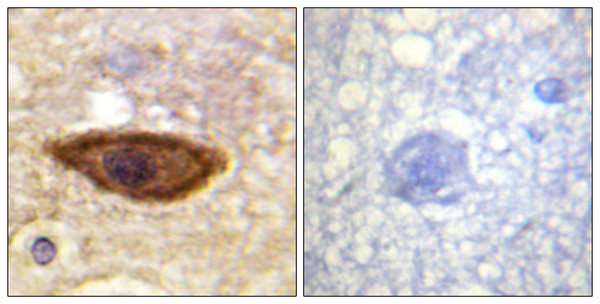| Post Translational Modifications | Ubiquitinated, leading to its internalization and degradation. Polyubiquitinated via 'Lys-48'-linked and 'Lys-63'-linked ubiquitin chains, leading to receptor internalization and lysosomal degradation. The 'Lys-63'-linked ubiquitin chains are cleaved off by the BRISC complex. Phosphorylated on tyrosine residues in response to interferon-binding: phosphorylation by TYK2 tyrosine kinase creates docking sites for STAT proteins. Phosphorylated on serine residues in response to interferon binding.this promotes interaction with FBXW11 and ubiquitination. Palmitoylation at Cys-463 is required for the activation of STAT1 and STAT2. |
| Function | Together with IFNAR2, forms the heterodimeric receptor for type I interferons (including interferons alpha, beta, epsilon, omega and kappa). Type I interferon binding activates the JAK-STAT signaling cascade, resulting in transcriptional activation or repression of interferon-regulated genes that encode the effectors of the interferon response. Mechanistically, type I interferon-binding brings the IFNAR1 and IFNAR2 subunits into close proximity with one another, driving their associated Janus kinases (JAKs) (TYK2 bound to IFNAR1 and JAK1 bound to IFNAR2) to cross-phosphorylate one another. The activated kinases phosphorylate specific tyrosine residues on the intracellular domains of IFNAR1 and IFNAR2, forming docking sites for the STAT transcription factors. STAT proteins are then phosphorylated by the JAKs, promoting their translocation into the nucleus to regulate expression of interferon-regulated genes. Can also act independently of IFNAR2: form an active IFNB1 receptor by itself and activate a signaling cascade that does not involve activation of the JAK-STAT pathway. |
| Protein Name | Interferon Alpha/Beta Receptor 1Ifn-R-1Ifn-Alpha/Beta Receptor 1Cytokine Receptor Class-Ii Member 1Cytokine Receptor Family 2 Member 1Crf2-1Type I Interferon Receptor 1 |
| Database Links | Reactome: R-HSA-909733Reactome: R-HSA-912694Reactome: R-HSA-9679191Reactome: R-HSA-9705671Reactome: R-HSA-9833109 |
| Cellular Localisation | Isoform 1: Cell MembraneSingle-Pass Type I Membrane ProteinLate EndosomeLysosomeInterferon Binding Triggers Internalization Of The Receptor From The Cell Membrane Into Endosomes And Then Into Lysosomes |
| Alternative Antibody Names | Anti-Interferon Alpha/Beta Receptor 1 antibodyAnti-Ifn-R-1 antibodyAnti-Ifn-Alpha/Beta Receptor 1 antibodyAnti-Cytokine Receptor Class-Ii Member 1 antibodyAnti-Cytokine Receptor Family 2 Member 1 antibodyAnti-Crf2-1 antibodyAnti-Type I Interferon Receptor 1 antibodyAnti-IFNAR1 antibodyAnti-IFNAR antibody |
Information sourced from Uniprot.org










